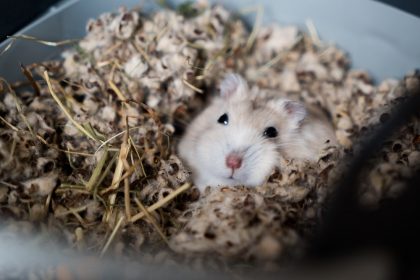Eight ways you can avoid Christmas Tree Syndrome this year
Do you suffer from ‘Christmas Tree Syndrome’? Find out what it is and learn eight ways you can avoid it this year.
Every year, around this time, people start coming down with symptoms of Christmas Tree Syndrome. (And no – it’s not an extreme fear of alpine trees or festive decorations!)
Christmas Tree Syndrome is a common allergy to a variety of airborne allergens that can get lodged in your Christmas tree. And if your tree isn’t to blame for your seasonal sneezes, it could be your pet or lots of dust hanging about in your home at Christmas, that’s triggering your symptoms.
Decorating the Christmas tree is usually a fun, family occasion, making the beginning of the festive season in December. But if you’re unlucky to be suffering from ‘Christmas Tree Syndrome’, tree decorating will be the last thing on your list of priorities.
Without realising it, many people could be bringing airborne allergens into their home when they buy their tree or get their tree out of the attic or storage. Christmas trees can harbour all sorts of allergens, so when you bring them into your front room, this could be the trigger for your seasonal sneezes and sniffles.
Your Christmas tree can house 53 types of mould
A team of scientists from Upstate Medical University analysed clippings from 28 Christmas trees including needles and bark, from a range of species, and found that they housed an unbelievable 53 different types of mould. Plus pollen from other trees also gets lodged in the bark, not from the pine tree itself, but from other plants.
All these allergens combined can provide a powerful trigger for those that are sensitive. Even artificial trees may trigger a reaction – if you have stored your tree since last year, it will have accumulated a layer of dust which will be dispersed when it is disturbed.
If your Christmas tree doesn’t get you, you could still end up with the sneezes and sniffles if you’re sensitive to pet or dust allergens. This happens because we spend a lot more time indoors exposed to these allergens at this time of year.
Eight ways you can avoid Christmas Tree Syndrome this year
Airborne allergens expert and creator of the HayMax allergen barrier balm, Max Wiseberg has eight useful suggestions to help sufferers of Christmas Tree Syndrome as well as pet and dust allergies.
- Hose down your tree before taking it into the house, or after getting it out of storage, as this can help remove some of the mould and spores – though it’s probably best to get someone who isn’t allergic to do this!
- Take care when you’re decorating your tree, or ideally get someone else to, as allergens will be disturbed as you move the tree into position and move the branches to hang the decorations and position the lights.
- Put your tree up as late as possible to help minimise the risk of exposure to mould.
- Regularly apply an allergen barrier balm like HayMax around your nostrils to help stop the allergens getting up your nose.
- Use an air purifier to help clear the air of mould particles. There are a number of these on the market which claim to filter toxins, including mould, out of the air in your home. Ensure that you buy one with a with a True HEPA filter to remove them.
- Damp dust and vacuum regularly.
- Keep cuddly toys and blankets in a cupboard to prevent the build-up of allergens on them.
- Keep animals clean and well groomed, to reduce allergens from their fur. And keep them out of your bedroom.
HayMax organic drug-free allergen barrier balms are available from Holland & Barrett, selected Morrisons and Boots, independent chemists, pharmacists and health stores, online at Ocado and direct on 01525 406600.
Photo by Irina Murza










